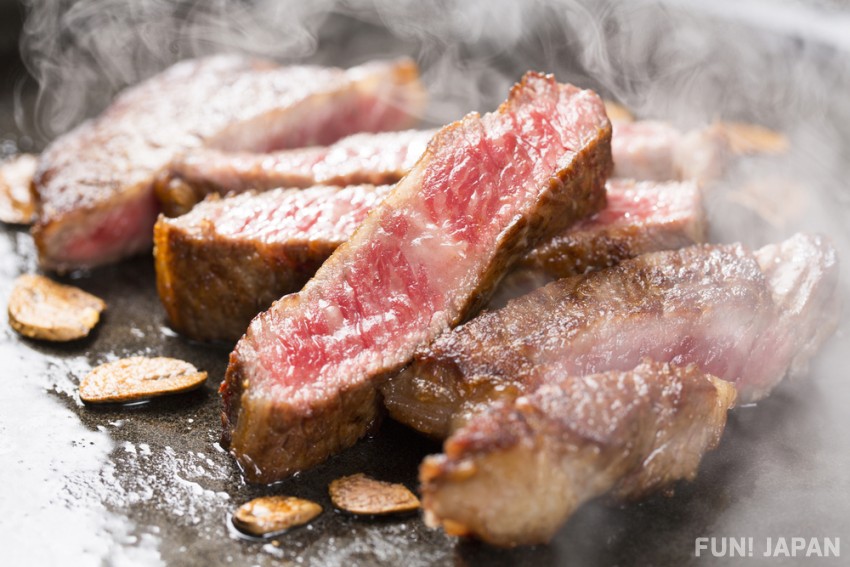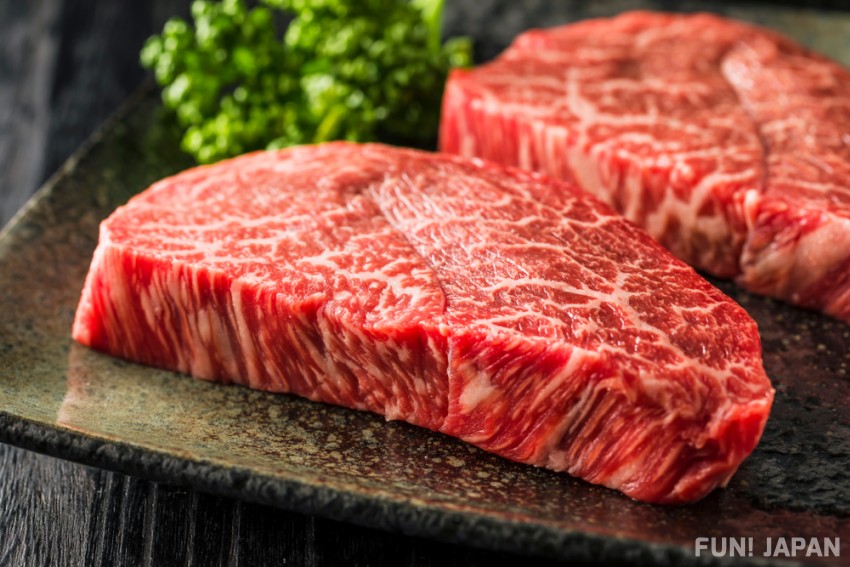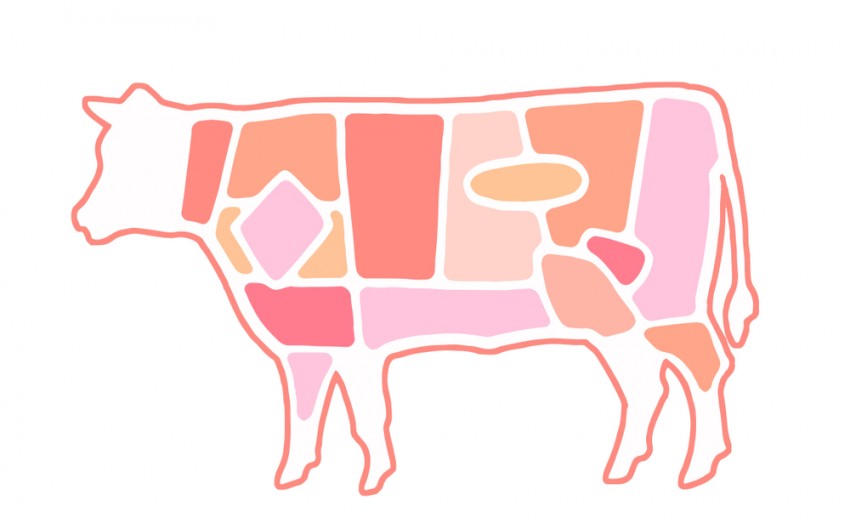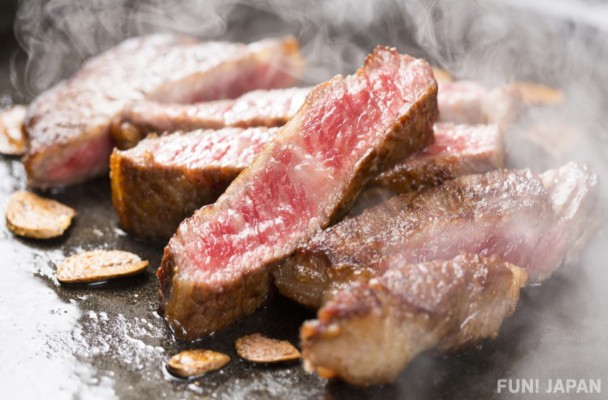
和牛の直訳は Japanese Beefですが、日本国産と謳われている牛肉の全てが、和牛でないというのは、ご存知ですか?どのお肉も美味しく感じるかもしれませんが、本物の和牛を食べたいなら、表記に気を付けて、注文したり購入したりしたいものです。今回の記事を読めば、もう間違えることはありませんよ!
最初に知っておきたい!日本で食べられる牛肉の種類

日本で食べられる牛肉は、和牛・国産牛・輸入牛の3種類です。それぞれの定義は下記の通りです。
和牛
日本で昔から食用専用種として育てられてきた牛のことで、黒毛和牛、褐毛(あかげ)和牛、無角和牛、日本短角牛の4種類が国に認定されています。
- 黒毛和牛:神戸牛や宮崎牛などのブランド牛として有名なのが、和牛の9割を占める黒毛和牛です。霜降り状の肉が特徴です。
- 褐毛和牛:肥後牛や土佐和牛などに代表される褐毛和牛です。赤身が多い肉質が特徴です。
- 無角和牛:山口県萩市などで肥育されているのが無角和牛です。1ケ月でわずか3頭~4頭しか出荷されない、非常に希少な品種です。
- 日本短角種:北海道、青森県、秋田県、岩手県などの寒い地域で肥育されています。赤身が多いのが特徴です。
国産牛
和牛の定義に該当する牛以外の、日本で育てられた牛です。必ずしも日本で生まれた牛だとは限らず、海外から輸入された牛であっても、一定期間、日本で飼育すると国産牛になります。国産牛は、乳牛のホルスタインの雄牛や廃乳した雌牛などです。
輸入牛
その名の通り、日本国外から輸入された牛です。日本ではアメリカ、オーストラリア、ニュージーランドの牛肉が目立ちます。
日本各県にある和牛の種類

兵庫県:神戸牛
神戸牛という牛は、存在していません。いわゆる皆さんが知っている神戸牛は、仔牛の産地として知られる兵庫県但馬地方の但馬(たじま)牛のなかでも、一定の品質基準を満たした牛肉のことを指します。
そのため神戸牛は、正式には「神戸肉」または「神戸ビーフ」といいます。そして下記の審査を経たもののみが、対象となります。
- 兵庫県産和牛の但馬牛を素牛としていること
- 子牛から肉牛として出荷するまでに、神戸肉流通推進協議会の登録会員(生産者)が肥育すること
- 兵庫県内の食肉センターに出荷した、未経産牛・去勢牛であること
- 枝肉格付をクリアしていること
宮崎県:宮崎牛
宮崎牛と一口に言っても、実は宮崎牛と宮崎和牛でも定義が異なります。
| 宮崎牛 | 宮崎県内で肥育された黒毛和種の和牛です。さらに、日本食肉格付協会の定めた格付け基準の肉質等級が4級以上のものです。4つの項目(霜降り具合、肉質のしまりとキメ、肉の色沢、脂肪の色沢)において、5段階中すべてに4以上が付く高評価ということになりますので、非常に上質なお肉と言えるでしょう。 |
| 宮崎和牛 | 宮崎県内で飼育された4種類(黒毛和種、褐毛和種、無角和種、日本短角種)と、これらの交配種を指します。その飼育期間の中で、宮崎県内で一番長く育てたもののみです。 |
滋賀県:近江牛
日本三大和牛(近江牛、松阪牛、神戸牛)はそれぞれ100年を超える歴史を持っていますが、近江牛はなかでも400年という断トツに長い歴史を持っています。
食肉禁止だった江戸時代において、現滋賀県彦根市一帯だけは唯一、牛の屠畜が許されていたことに起因します。明治維新前後は、農家から牛の取引に転身する者が出て、全国に先駆けて各地からいい牛を滋賀県に集めていたようです。そのため、特別な美味しさがあると言われています。
近江牛の特徴としては、肉と脂肪の混ざり具合である「サシ」が丁度良いという点があります。また細かく、柔らかな肉質、口の中でとろけるほど上品な脂が特長です。
三重県:松阪牛
松阪牛の多くは、但馬牛の仔牛を、松阪の農家が500日以上かけて育てたものです。牛の食欲増進のためにビールを与えたり、焼酎で体をマッサージしたりします。松阪牛は、黒毛和種の未経産の雌牛であること、松阪牛個体識別管理システムに登録されていることなどが条件です。
ちなみに松阪牛の読み方は「まつさかうし」または「まつさかぎゅう」です。日本人が良く間違える「まつさ゛かうし」や「まつさ゛かぎゅう」といった呼び方や、「松坂牛」の漢字の表記は誤りです。
山形県:米沢牛
米沢牛がブランド牛になったきっかけは、一人のイギリス人にあると言われています。1875年、一人のイギリス人が英語教師として米沢を訪れ、そこで食べた牛肉の美味しさに感動し、横浜に戻る際に一頭の牛を連れ帰ったというのです。その後、米沢牛の上質な美味しさはすぐに広まったそうです。現代においては、下記の審査を経たもののみが、対象となります。
- 黒毛和種の未経産雌牛
- 米沢牛銘柄推進協議会が認定したもの
- 登録された牛舎での飼育期間が最も長いもの
など、細かく続きます。
和牛MAP

県名と牛の名前を羅列して紹介してきましたが、具体的に、日本のどの辺りが産地なのか?可愛い地図でまとめましたので、こちらの記事も合わせてご覧ください。

Comments